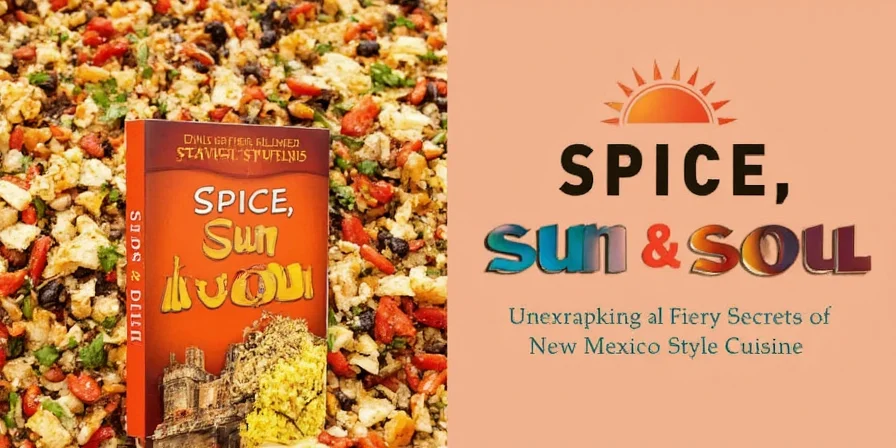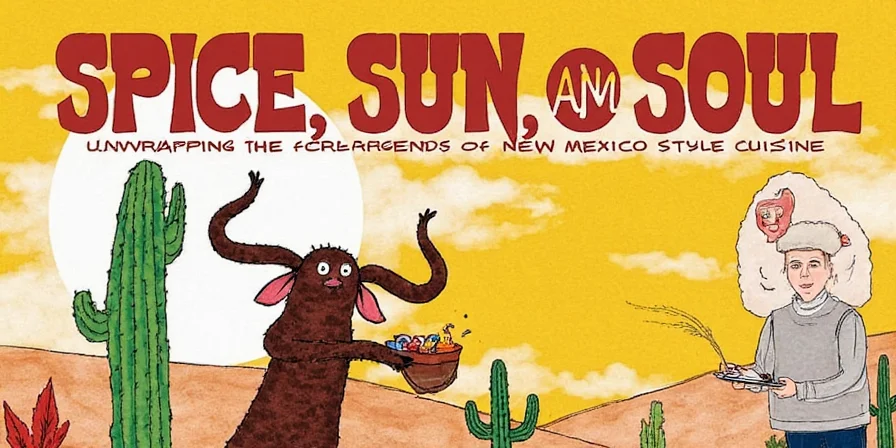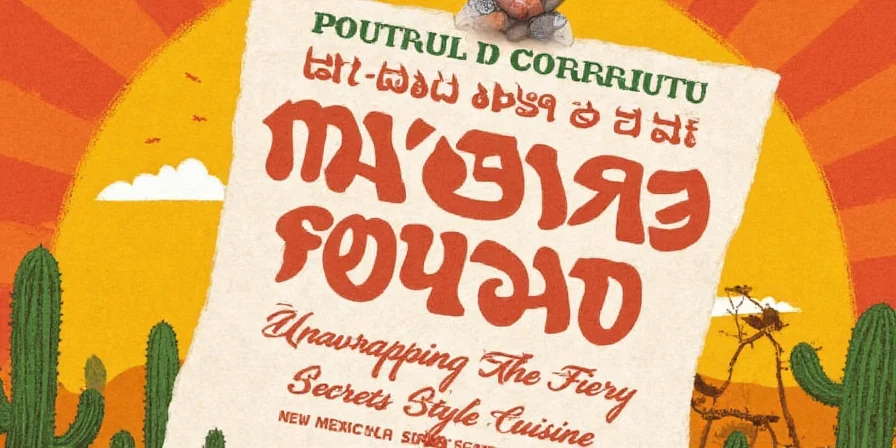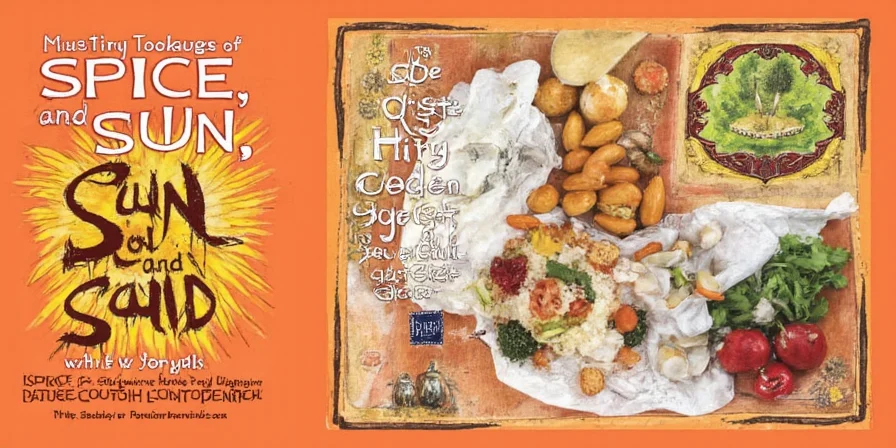Spice, Sun, and Soul: Unwrapping the Fiery Secrets of New Mexico Style Cuisine
In the land where adobe meets chili, where the sun burns as bright as the peppers, lies the heart of New Mexico style cuisine. It's not just food — it’s a flavor-packed lifestyle that blends indigenous roots, Spanish influences, and modern innovation into every bite. So grab your sombrero, adjust your spice tolerance, and let’s take a deep dive into one of America’s most underrated culinary treasures.
Table of Contents
- The Holy Trinity: Red or Green?”
- From Ancestral Roots to Modern Heat
- Spice Spotlight: What Makes New Mexico Flavor Unique?
- Kitchen Tricks for Nailing That New Mexico Zing
- Top 5 Must-Try New Mexico Style Dishes
- Beyond the Plate: The Culture of Spice in New Mexico
- Heat Level Comparison Table
The Holy Trinity: Red or Green?

Ask any New Mexican what their allegiance is, and they’ll respond with a single word: “Green.” Or maybe red. But never both? Oh yes, both! The iconic question, “Red or green?” isn’t just a menu option — it’s practically a state motto (and officially recognized as such by the state legislature).
- Green chiles: Roasted Hatch chiles are king here — smoky, grassy, and packing a moderate punch. They’re often stuffed into burritos, melted into sauces, or baked into salsas.
- Red chiles: Matured and dried versions of green chiles, these bring a deeper, earthier heat. Think rich, slow-simmered sauces that coat enchiladas like molten velvet.
- Christmas-style: For the truly brave or indecisive — a mix of both red and green sauces on the same plate!
From Ancestral Roots to Modern Heat

The origins of New Mexico style cooking stretch back centuries to the Pueblo peoples, who cultivated native chiles long before Spanish settlers arrived. The introduction of dairy, wheat, and pork by the Europeans fused with indigenous ingredients to create a hybrid culinary tradition.
Fast-forward to today, and the region has become a hotspot for chili innovation. From gourmet takes on classic dishes to experimental pairings (hello, chili-infused cocktails!), New Mexico continues to evolve while staying true to its roots.
Spice Spotlight: What Makes New Mexico Flavor Unique?

While the chile pepper reigns supreme, New Mexico cuisine uses a carefully curated palette of spices and seasonings to balance and enhance flavor. Here’s a breakdown:
- Chili powder: Not the generic kind you find in supermarkets. Real NM chili powder is usually made from dried red chiles ground with minimal additives.
- Cumin: A staple in many Southwestern kitchens, adding an earthy warmth to meats and beans.
- Coriander: Often used in rubs and marinades for grilled proteins.
- Garlic & onion powders: Base flavors that give depth to sauces and stews.
- Paprika: Sometimes added for color and mild sweetness.
- Dried oregano: Typically Mexican oregano, which is more citrusy and pungent than Mediterranean varieties.
Kitchen Tricks for Nailing That New Mexico Zing

Whether you're a home cook or a seasoned pro, mastering New Mexico flavor requires a few key techniques:
- Roast Your Own Chiles – Store-bought roasted peppers are okay, but nothing beats the smoky aroma of fresh Hatch or Anaheim chiles blistered over an open flame.
- Toast Whole Spices – Cumin seeds and coriander benefit greatly from a quick toast before grinding — this unlocks hidden aromatics.
- Simmer Sauces Slowly – Don’t rush your red or green sauce. Letting it simmer gently for at least 30 minutes helps develop complex layers of flavor.
- Use Lard (Or Don’t) – Traditional cooks swear by lard for frying tortillas or sautéing onions, but olive oil or avocado oil work well for those avoiding animal fats.
- Add a Touch of Vinegar – A splash of apple cider vinegar can brighten up heavy, spicy dishes.
- Serve with Love (and Bread) – Sop it up with warm, flour tortillas or fry bread — it’s not just about taste, it’s about experience.
Top 5 Must-Try New Mexico Style Dishes

If you’ve only got time for five plates, make them these:
| Dish | Description | Signature Ingredient |
|---|---|---|
| Chiles Rellenos | Stuffed, battered, and fried green chiles filled with cheese or meat. | Hatch green chiles |
| Enchiladas Suizas | Green sauce enchiladas topped with melted cheese and cream. | Creamy green chile sauce |
| Posole | A hearty hominy stew with pork, served with red chile broth. | Hominy + red chile |
| Burrito de Mole | A unique twist featuring mole negro and red chile instead of typical fillings. | Mole negro |
| Fry Bread Tacos | Puffy fry bread topped with carne adovada or beans. | Fry bread base |
Beyond the Plate: The Culture of Spice in New Mexico

In New Mexico, chiles aren’t just a seasoning — they’re a cultural identity. Annual festivals celebrate the harvest, local markets overflow with freshly roasted pods, and even roadside stands sell bags of smoldering goodness straight from the fire.
There’s a certain pride in growing your own, roasting your own, and even enduring the tears that come with peeling fresh chiles. This is a place where people talk about heat levels like wine connoisseurs discuss terroir — it’s personal, it’s passionate, and it’s part of the soul of the Southwest.
Heat Level Comparison Table

| Pepper Type | Scoville Units | Flavor Profile | Best Used In |
|---|---|---|---|
| Hatch Green | 2,500–8,000 | Smoky, vegetal | Stuffed, roasted, sauces |
| Anaheim | 500–2,500 | Mild, tangy | Stews, casseroles |
| Poblano (Fresh) | 1,000–2,000 | Rich, earthy | Chiles rellenos |
| Pasilla (Dried) | 2,500–4,000 | Fruity, raisin-like | Mole sauces |
| Cayenne (Ground) | 30,000–50,000 | Sharp, fiery | Dry rubs, hot sauces |
Conclusion: Embracing the Heat, One Bite at a Time
So whether you’re new to New Mexico style or a lifelong devotee, there’s always something more to discover. From the smoky char of a freshly roasted green chile to the comforting warmth of a red sauce simmered to perfection, this cuisine is all about boldness, balance, and belonging.
So next time someone asks you, “Red or green?” you’ll know the real answer: “Yes.” Because New Mexico style isn’t just a choice — it’s a way of life, steeped in tradition, spiced with pride, and always, always served with heart.











 浙公网安备
33010002000092号
浙公网安备
33010002000092号 浙B2-20120091-4
浙B2-20120091-4